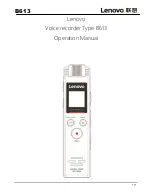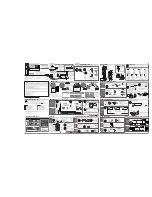
Ears-104
Commercial in Confidence
Copyright © 2021, all rights reserved by Exacom, Inc.
15
will result in a Service Crash on the Streaming Server side. If Streaming is not used, it should
contain:
Server: {
}
FTP Servers
-
This section def ines the FTP client settings.
Server1
- More than one client-server connection can be specif ied,
name additional entries with
the Server# format in ascending order.
ServerID
- A unique identif ier (UID) f or a specif ic client-server connection. The FTP client will create a
directory with the same name as the UID which tracks details such as last successf ul transf er a backlog
of f ailed transf ers. The purpose of tracking such inf ormation is that should the Server IP Address change ,
the client will not lose its place and only transmit the correct records. This ID should be specif ied as
Alpha-Numeric wrapped in quotations.
This is a required field.
Server
- The Ipv4 Address of the FTP Server. It must be a valid IP address wrapped in quotations.
This
is a required field.
Port - (default 21)
The port used by the client-server connection and should be specif ied as a valid port
without quotations.
Keyfile - (default no encryption)
A pathname to a Keyf ile used by FTP over SSL. This should be a valid
pathname wrapped in quotations.
User -
The username as pre-determined on the FTP server. Enter the username exactly as it appears on the
server wrapped in quotations.
This is a required field.
Password -
This specif ies the password as predetermined on the FTP server. This is not stored in plain - text
and must be encrypted prior to being inserted into the conf iguration f ile. Ref er to section
f or details on
encrypted the password.
This is a required field.
FTP = {
Server1 = {
ServerID = "TestRack";
Server = "192.168.3.201";
Port = 21;
Keyfile = "/opt/ears/ftp_client/certs/ears.pem";
User = "earsSecure";
Password = "generateFTPpass-output-goes-here";
};
};
Sinks
–
Any number of sinks may be def ined in this section and used interchangeably with
any given channel. There are currently two sink types, 1) Wave and 2) Stream.
Each sink should be given a unique name such as Chan1File, Chan2File, etc, or they could be
named according to source such as Radio1 or Trunk3. Anything unique is valid. Nominally
every channel will have its own sink def ined.
Wave Sinks have the following settings available for configuration:
Header -
Is the unique name of an EarsWaveHeader entry def ined within this conf iguration f ile. This
should be wrapped in quotations.
DataFormat -
(default “PCM”)
Currently the only f ormat supported.
FileNameFormat -
(default “%P/Line%C-%d.cap”)










































